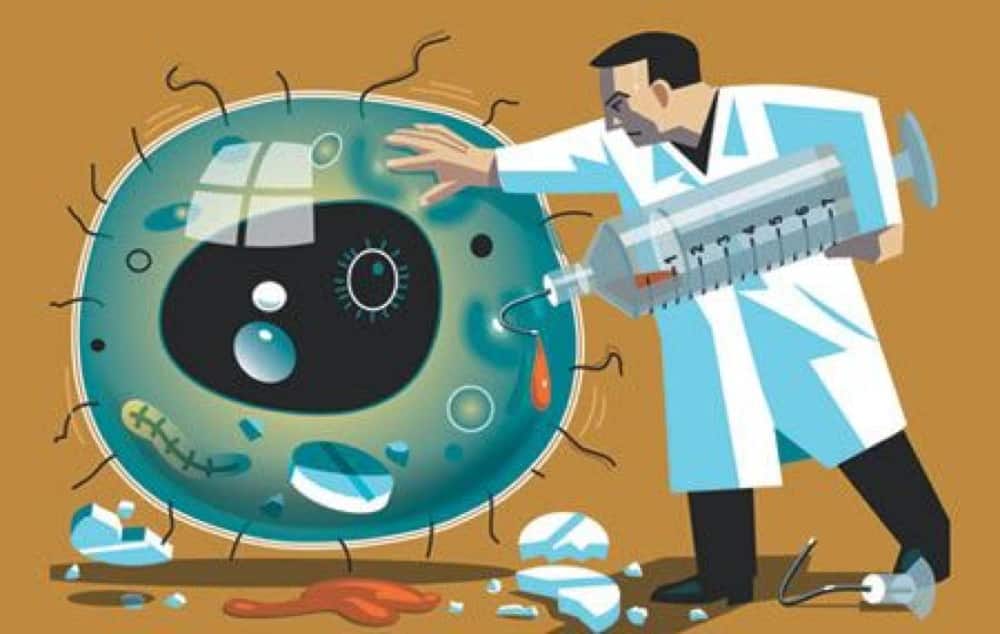Odilorhabdins, A Newly Discovered Class of Antibiotics
Antimicrobial resistance is one of the most serious threats to human health. Some strains of critical bacterial pathogens have acquired resistance to nearly all antibiotics available to date.
Most of the known antibiotics that are currently used have been discovered in the 1940s–1960s by extensive screening of soil actinomycetes. Over time, this source of new antibacterial agents has been significantly exhausted because of overmining and alternative drug discovery strategies that have been explored.
Now, researchers from the University of Illinois at Chicago and Nosopharm, a biotechnology company based in Lyon, France, have unveiled their discovery of a new class of antibiotics.
Called the odilorhabdins, or ODLs, this new class of antibiotic is unique and promising on two fronts: its unconventional source and its distinct way of killing bacteria, both of which suggest the compound may be effective at treating drug-resistant or hard-to-treat bacterial infections.

The team, in the process of identifying the compound, screened 80 cultured strains of the bacteria for antimicrobial activity.
The researchers then isolated the active compounds, studied their chemical structures and engineered more potent derivatives. They found
that odilorhabdins act on the ribosome — the molecular machine of individual cells that makes the proteins it needs to function — of bacterial cells.“Like many clinically useful antibiotics, odilorhabdins work by targeting the ribosome. But they are unique because they bind to a place on the ribosome that has never been used by other known antibiotics,” said co-lead author Dr. Yury Polikanov, from the College of Liberal Arts and Sciences at the University of Illinois, Chicago.
The team also found that when bound to the ribosome, odilorhabdins disrupt their ability to interpret and translate genetic code.
“When odilorhabdins are introduced to the bacterial cells, they impact the reading ability of the ribosome and cause the ribosome to make mistakes when it creates new proteins,” said co-lead author Professor Alexander Mankin, director of the Center for Biomolecular Sciences in the College of Pharmacy at the University of Illinois, Chicago.
Through chemical synthesis, the team created an ODL-derived antibiotic that inhibited bacteria growth of several Gram-positive and -negative bacteria in cell cultures, including Klebsiella pneumoniae, Escherichia coli, Enterobacter cloacae, E. aerogenes and Staphylococcus aureus with minimum inhibitory concentration (MIC) values of 4-16 µg/mL. MIC levels were higher in some bacterial cultures, including Pseudomonas aeruginosa (>64 µg/mL.)
The ODL antibiotic decreased bacteria colony-forming units (CFUs) in cell cultures of K. pneumoniae or E. coli, compared with no treatment. In mouse models of K. pneumoniae sepsis and lung infection, the antibiotic led to a more than 2.9 log10 reduction of CFUs in mouse blood and lungs, respectively.
Structural analysis showed the ODL antibiotic bound to the decoding center of the small ribosomal unit at a different site than other ribosomal-targeting antibiotics including paromomycin and streptomycin, suggesting ODL-based antibiotics could treat infections resistant to those drugs.
“We found that the ODL compounds cured mice infected with several pathogenic bacteria and demonstrated activity against both Gram-negative and Gram-positive pathogens, notably including carbapenem-resistant Enterobacteriacae,” said co-corresponding author Maxime Gualtieri, co-founder and chief scientific officer of Nosopharm.
The researchers say this study is a testament to the growing trend of international and cross-disciplinary collaboration, which is needed to combat the growing and global threat of antibiotic resistance.































This antibiotics is also not an exception.
Sooner or later the bacteria will also develop resistance against this